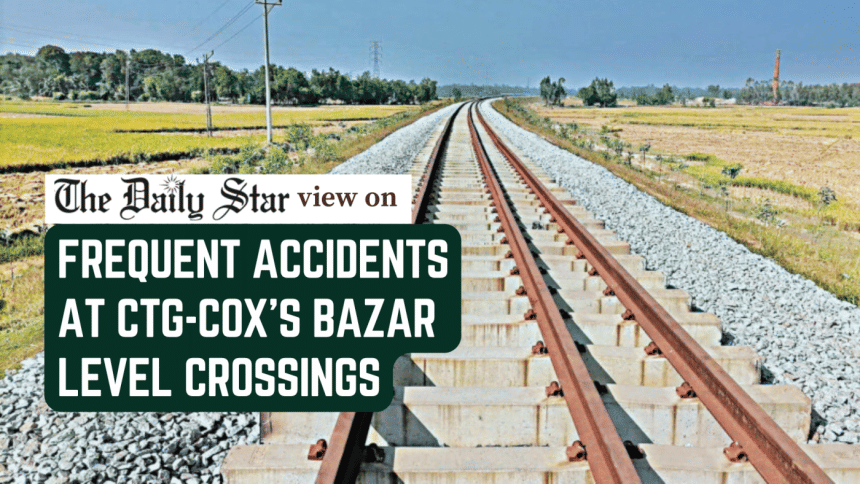The frequent accidents and fatalities occurring at the level crossings along the Chattogram-Cox’s Bazar rail line have raised significant concerns. Railway Police data reveals that 30 individuals have lost their lives in the past 20 months along this route—17 fatalities last year and 13 so far this year. The most recent tragic incident took place on August 2 in the Rashidnagar area of Ramu, Cox’s Bazar, where a train collided with a CNG-operated auto-rickshaw, resulting in the deaths of four individuals, including three from the same family. These unfortunate events highlight a concerning lack of emphasis on public safety by the authorities. Notably, a similar incident occurred last October when a train struck and killed an elephant.
One contributing factor to these tragic events is the absence of adequate safety measures at the level crossings. Out of the 72 crossings on the newly constructed railway, 56 lack gatekeepers or gates, leading to a heightened risk of accidents. The site of the recent collision also lacked protective measures and a gatekeeper. Despite persistent appeals from local authorities for the installation of gates and gatekeepers at these hazardous points, no action has been taken by higher authorities. The delay in implementing such crucial safety measures raises questions about the authorities’ commitment to averting these accidents.
According to reports, many crossings only have signboards as safety precautions, which are often overlooked by drivers and commuters. This neglect for public safety is evident at a crossing near a school in Lohagara, which is heavily frequented by students and commuters. Additionally, some crossings pose a heightened risk due to their obscured visibility caused by sharp bends and dense vegetation.
It is imperative for authorities to thoroughly investigate the series of accidents on the Chattogram-Cox’s Bazar rail line and promptly implement preventive measures to safeguard lives. The installation of gates or barriers at all crossings is essential, with a particular focus on appointing gatekeepers at high-traffic locations. Special safety protocols should be enforced at crossings near bends to mitigate the risk posed by trains approaching unexpectedly. Furthermore, public awareness campaigns should be conducted to educate individuals on the dangers of crossing railway tracks carelessly and promote the use of available underpasses designed for pedestrian safety. Ensuring the safety of rail crossings is a paramount responsibility of the railway authorities to protect all users.

